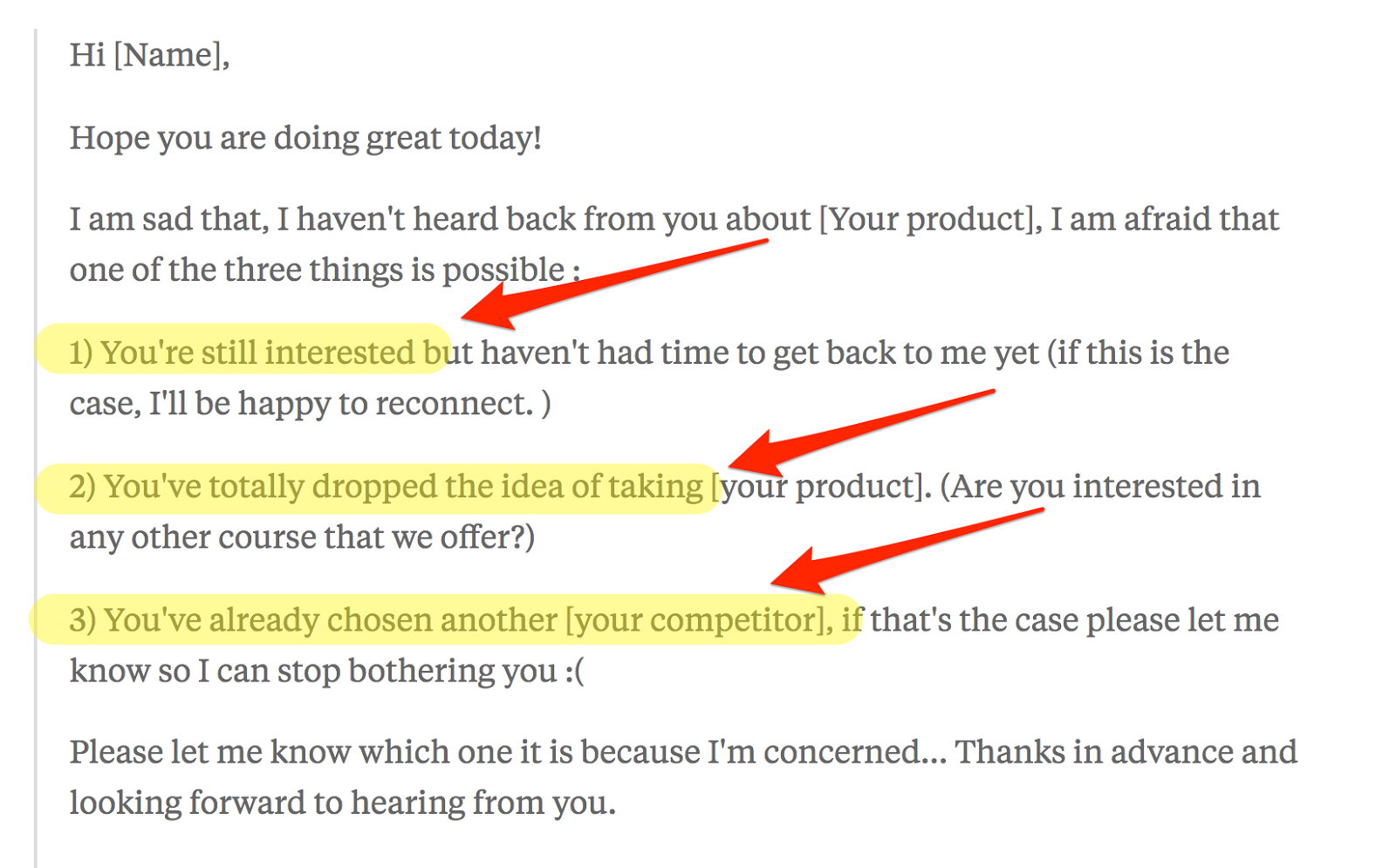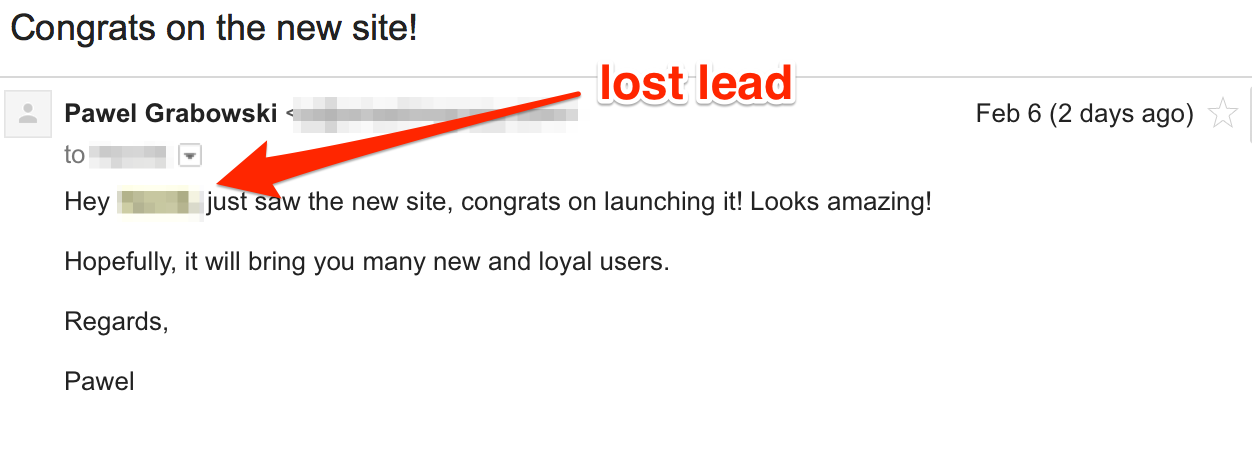- Solutions
-
Products
-
Resources
Sales Automation Tools | Cirrus Insight by Kristi Campbell View all Blog Posts >Get the App, Get the Sidebar, & Get Your Trial Going HereUnleash limitless growth opportunities by partnering with Cirrus Insight.
- Pricing
Filter By:
- All topics
- Sales Intelligence
- Salesforce
- Sales Productivity
- Sales Strategy
- Sales Prospecting
- Book More Meetings
- Sales Activity Data
- Company News
- Sales Leadership
- Sales Metrics
- Team Scheduling
- Prospect Smarter
- AI
- Serious Insights
- Comparison
- Conversation Intelligence
- Sync To Your CRM
- Email Blast
- Email Campaigns
This is How to Re-Engage Lost Leads and Save the Sale

If you've ever looked at your CRM wondering what to do with all the people who lost interest in your offer, then you'll love the advice we've prepared for you today. Our lead generation specialists have a few tricks up their sleeve, and they are willing to share them with you to help you revitalize and automate your sales pipeline when you re-engage with lost leads.
Our ideas can be used in both the B2B and B2C environment, and if you present one of them to your boss correctly, you might be looking at a promotion.
Why Do You Need a List of Ideas for Getting Back Lost Leads
You see, a lack of response and loss of initial interest from a prospect doesn't automatically mean that the sale is gone. You can actually work your way around that and convince them to make a purchase. What's more, to move a lost lead further into your sales funnel, you just need to reconnect.
In this post, we'll show you exactly how to do it. If you want to reignite lost leads and get them back to visiting your website, keep on reading. Learn to tailor your responses to bring dead leads to life.
Here at Cirrus Insights. We love to help businesses increase their bottom line. That's why we have a gift for you at the very beginning of this guide.
GIFT: Are you ready to start re-engaging lost leads? Grab those three email templates and get started right away. Click here to download >>
Stay on Top of Why Leads Disappear Before Trying to Re-Engage Them
Learning to nurture lost leads is no easy feat. Sometimes leads just go dark. Suddenly, they stop responding to your emails. A person who seemed so interested in buying never gets back to you about your proposal (and you know they've viewed it more than once). And all of a sudden, a deal you thought you had in the pocket falls through the cracks. This is very frustrating for sales reps.
But have you ever wondered why they disappear without a trace in the first place? You should, because finding out what the reason was for a lead going dark will help you improve your chances of reviving them. You want to close a deal, right?If you can differentiate between leads who have actually said no and those who might have been too busy to respond, you have completed the first step in the lost lead nurturing process. Cara Hogan wrote a cool paragraph in an InsideSquared blog post. Check it out.
"A disappearing act is often the perfect candidate for revival. They may be busy and overwhelmed at work, but remain interested in your product. A hard no is often more difficult to overcome, but could also be a revival candidate in the right circumstances, such as a timing objection."
If you were looking for an easy answer to why your leads are disappearing, there is no one answer. The most obvious reason appears to be that they may not need your product or service anymore. True as this may be, it cannot be the only explanation. If you time your response right and give off a sense of urgency, you might turn the situation around then and there.
According to Toister Performance Solutions, most customers expect a response within an hour, and 14.5%, within 15 minutes. So, if you nurture leads right from the get-go, you can delay learning about tactics to reconnect with old leads, but no matter how good you are, retargeting old potential customers is bound to happen. Even if you find your ideal buyer persona, they might be too busy to respond. They have moved to a new job. There are many common reasons why they are not opening your emails, but you need to stay vigilant.
That's enough theorizing. Let's move to the reason why you're here. All businesses lose leads, but we'll help you revive your sales pipeline with four expert tips.
Re-Engage Dead Leads by Following 4 Easy Tips
Let's change the circumstances and close more deals.
#1. Survey Your Lost Qualified Leads
(Disclaimer: Full credit to Nidhi Singh for suggesting this step.)
There are three possible scenarios for every lost lead in your CRM.
- They're still interested in your product or service, but are either too busy to pursue it further, or the project got stalled for some reason.
- They're no longer interested. Perhaps they never truly were interested in the first place.
- They were interested, but for one reason or another, they decided to engage with your competitor instead.
You have only one way to find out which one is true. You need to ask them directly.
So, the first step to get your leads back is to email a simple survey, asking them to define their current situation. Here's the email Nidhi suggested.

-
This survey will help you re-engage lost sales leads in two ways. First, you'll identify contacts in your CRM that still present an opportunity for re-engagement, and second, after they finish responding to your messages, you will be able to plan further follow-ups to initiate a change in circumstances to convert them into potential clients.
Here are the steps to re-engage lost leads.
#2. Use Trigger Events to Reconnect
After you have completed the first step, you can move toward re-engaging them with trigger events. A trigger event is any new development in your lead's company. They might have a new website or new offices. They might have a new product or have launched a new feature. Follow the news to stay in the loop. When you have successfully identified one, that's your ideal time to strike.
Trigger events give you an excuse to reach out and connect with a lead without putting any pressure on them. This is a standard first step in many marketing campaigns. We have an excellent example that will help personalize the situation and make it more real.
Earlier this week, we noticed that one of our lost leads who has been "quiet" for about six months launched a new website. We quickly emailed my contact at the company to congratulate them.
Within an hour I received the reply.

As it turns out, not only do they remember us, but they are still interested in working with our company.
Remember that trigger events are time-bound, so be sure not to miss your window.
#3. Re-Engage Lost Leads with Relevant Content

It's no secret that offering prospects compelling and relevant content can dramatically increase your chances of making the sale. We have talked about this at length in another post. If you've missed it, check it out here.
The point is that you can use content with a pinch of personalization to reconnect with people you haven't engaged with for a while. If you've published any original research findings, a guide to overcoming a particular problem your leads may be struggling with, or a report that might spark their interest, then send them a quick notification about it. This is a standard practice in sales and marketing teams.
PRO OUTREACH TIP: You can also use the two-step process we outlined before to quickly determine which of your lost leads are still interested in talking to you.
Instead of contacting potential customers right away, send them a quick note about it first, asking if they'd be interested in seeing it. Based on their response, you can estimate the likelihood of them becoming active leads again.
If you send them links without a heads-up, this might be seen as intrusive. If they agree to see your post, you have already successfully contacted potential customers using personalized content. Give them a reason to talk with you, and you're halfway through the door.
#4. Ask Leads for Feedback on Your Sales Process
![]()
Let's face it—not every lead you try to re-engage will want to proceed with the sale. These types of leads are easy to spot. They'll ignore your content offers and won't respond to your emails regarding trigger events. However, these people might still be willing to share their insights into your sales process, or at least they may find the request unusual enough to act on it.
Asking for feedback gives them a call to action, and their feedback will help you improve your process, eliminating potential reasons for leads going dark in the future. So, email any lost leads who haven't responded to your previous re-engagement campaigns (like free trials, content offers, or trigger events) and ask them about other things you could have done better to win their trust.
Close the email with a short note asking for permission to keep them on your mailing list. This way, in spite of losing the sale, you might still gain valuable insight (plus, you might actually retain a person on your lead-nurturing list for later).
Conclusion
If your sales outreach efforts are not yielding results, it's time to get in touch with potential customers who lost interest in your offer. Lost leads are an important part of your sales funnel. These people liked visiting your website and might have been ready to buy from you, but somehow, they went from a good lead to a lost lead. If you have the chance to turn it around, you should take it.

.png?width=1268&height=1772&name=Sidebar-C%20(1).png)

